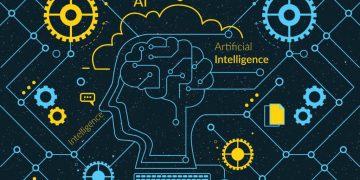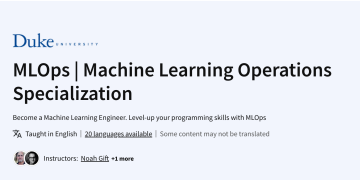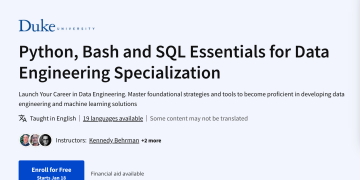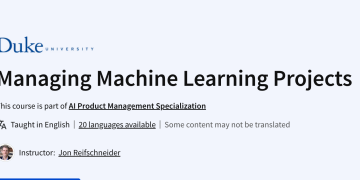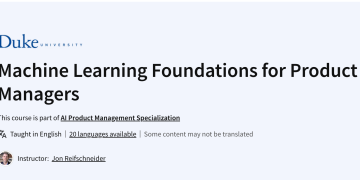Data mining is the process of discovering new patterns in large dataset by utilizing machine learning, statistics, and other database systems to produce new insights into the data. If the data is not correctly evaluated and processed, it might be extremely deceptive.
Patterns assist to save time on data interpretation by instantly visualizing data. Several applications or technologies are used to transform raw data into usable and trustworthy information. Data security is a top priority since no one knows how such data behaves.

Data Mining Fundamentals
Mining is generally performed on a database containing several data sets. It is kept in structural format. Hidden information is found at that point; for example, internet businesses such as Google require massive quantities of data to advertise to their consumers. Such case mining examines the query search procedure to provide relevant ranking data. Classifications (predicting the most likely scenario), association (finding variables connected to each other), and prediction are the tools and strategies utilized in the mining process (predict the value of one variable with the other). Machine learning is used for effective pattern identification.
A wide variety of algorithms are implemented to take relevant information from the queries.They make the work so easy by predicting customer behaviour and using these tools to search data patterns. It turns raw data into structured information.
The steps involved in this process are:
- They extract and load data into a data warehouse (which requires pre-processing) stored in the multidimensional database (which does slice, dice, cubical format analysis).
- Using Application software, they provide data access to business analysts.
- Presenting this information in an easily understandable format such as graphs.
- We need to increases the volume and diversity of data.
In brief, in three simple steps. It consists of information preparation(exploration), the choice of different models of building and validation (generate expected outcomes). On the other hand, it is not as easy to do as it is important to grasp what and how it may be applied with vast data output throughout all companies in all data streams. The most important aspects in marketing include e-commerce, customer relationship management, banks, healthcare. Data mining algorithms are used in all these applications for predictions and data extraction patterns.
Top Data Mining Companies
Many top organizations use this domain to ensure competitive advantages, increase revenues and determine the profits of customers. You are the following:
- Google – Searching relevant information against the queries.
- IBM and SAP
- IBM Cognos – BI self-service analytics
- WizSoft
- Cygnus Web
- Oracle
- Datum Informatics
- Hewlett Packard Enterprise
- SAS Institue -Data mining services.
- Delta – Airline Service (Monitoring customer feedback),
- Neural Technologies – provides product and services.
- Amazon – Product service.
Data Mining Subsets
Some of the mining techniques include prediction, regression, clustering, association, decision trees, rule detection and Nearest neighbor. Data sets are divided into two categories. They are a test set and a training set. The other subsets of data mining related to data are data science, Data Analytics, Machine Learning, Big Data, and Data Visualization. The major difference between them is mining is still an analyst and builds an algorithm to determine the structure of data. Mining gathers data first and makes the inductive process while others don’t find patterns.
Implementing Data Mining
The initial process comprises cleaning the data from various sources, which is an important step. They do this by employing techniques such as statistical analysis, machine learning, and data visualization tool. The method used is known as predictive modeling. Exploration, validation/verification, and deployment comprise the process. The tasks entails
- Problem Statement is generated.
- Understand the data with the background.
- Implementing Modelling Approaches.
- Identifying Performance measurement and interpret the data.
- Visualizing the data with results.
Modelling techniques used here are Bayesian Networks, Neural Networks, Decision Trees, Linear and logistic regression, genetic algorithms, Fuzzy Sets.
The primary tasks are:
- Classification
- Clustering
- Regression
- Summarization
- Dependency Modelling
- Discover Detection
Advantages of Data Mining
There are numerous benefits, some of which are listed below:
- They improve planning and decision-making, streamlining the process and maximizing cost savings.
- It is easier for the user to analyze a large amount of data in a short period of time.
- They are employed in a variety of fields, including agriculture, medicine, genetics, bioinformatics, and sentiment analysis.
- It aids marketers in predicting client purchase behavior and has been utilized in electrical power engineering and customer comprehension.
- They also help with credit card transactions and fraud detection.
- The K-Means approach to mining is commonly used in agriculture to forecast fermentation problems.
- They are effective for predicting future trends due to the technologies used. Another popular technology is graphical interfaces, which make programs easier to use.
- They assist us in detecting fraudulent acts in market analysis and manufacturing data mining, as well as improving usability and design. They can also be used for purposes other than marketing.
- Increases firm revenues while decreasing business costs.
Required skills
To become a data mining practitioner, one must have specialized technologies as well as interpersonal abilities. Analytic tools such as MySQL and Hadoop, as well as programming languages such as Python, Perl, and Java, are examples of technical capabilities. In addition, statistical ideas, knowledge induction, data structures and algorithms, and working understanding of Hadoop and MapReduce are required. Skills in the following areas are required: DB2, ETL tools, and Oracle. Learning Machine Learning is vital if you want to stand out from the crowd of data miners. Math fundamentals are required to figure out numbers, ratios, correlation, and regression stages in order to find patterns in data.
What are the benefits of Data Mining?
Mining is essential because it ranks towards the top of the key technologies that will impact organizations in the coming years. They aid in the exploration and identification of data patterns. They are linked to the data warehouse and neural networks, which are in charge of extraction. In marketing, segmentation and clustering are used to track customer purchase behavior. Mining mines the pages as well as the web for relevant search in document mining. Their responsibilities include doing research, analyzing data, and interpreting results. It is useful for detecting fraud and developing models to comprehend traits based on patterns.
Key to success in mining are:
- Source of data
- Appropriate Algorithms
- Scientific mining
- Increased processing speed
Scope of Data Mining
Frequent pattern mining has widened the scope of data analysis and has a strong track record in mining approaches. Mining has a wide range of applications in both large and small businesses, with promising future prospects. They have automated trend forecasts, such as fraud detection and ROI maximization in the future—Discovery of Past Unknown Patterns. Advanced concepts such as neural and fuzzy logic are used in mining approaches to boost the bottom line and swiftly obtain resources from the search. Distributed Datamining, Sequence Data Mining, Spatial and Geographic Data Mining, and Multimedia could all have a bright future.
Why do we need Data Mining?
In today’s corporate world, data mining is employed in a variety of industries for analytical purposes; all that the user need is clear information, which expands its scope. We may use this technique to evaluate data and convert it into relevant data, allowing us to make smart judgments and predictions in the workplace. In the IT business, mining speeds up the internet, and using the mining tool to improve the site’s response time is simple. Data sets can be mined by paramedical companies to discover agents. Customers’ behavior will be examined; patterns and relationships will be discovered, and future company strategy will be predicted. It eliminates the time and workforce required to sort the large databases. They provide clear identification of hidden patterns to overcome risks in business. It identifies outliers in the data. It helps to understand the customer and improve their service to reach the goal of the user.
Who is the right audience for learning this technology?
- The right audience is IT managers, data analysts looking for career growth and improving data management, and tools for successful data mining.
- Experts working on Data warehousing and reporting tools and business intelligence as well.
- Beginners can take it with good logical and analytical skills.
- Software programmers, six sigma consultants.
How will this technology help you in career growth?
More roles in organizations are available in the field of data science. Companies are looking for people with exceptional data mining abilities and experience, therefore the demand for miner specialists is critical. A data miner is a person who analyzes data and improves business solutions using statistical tools. Because it specialists play such an important part in the data science team, their abilities are increasingly recognized by businesses of all sizes.
Conclusion
In today’s world, it’s a fast expanding technology since everyone wants their data to be used correctly in order to acquire reliable information Social networks such as Facebook, Twitter etc. and online shopping like Amazon it is data that describes the data gathered and captured; we must extract strategic facts from that data. It is evolving globally for this reason. By gaining deeper insights with the organization, they mix big data and machine learning. It’s all about foreseeing the future of analysis. Companies must keep up with the current mining trends to stay ahead of the competition; in the meantime, mining aids in the acquisition of knowledge-based information. And this technology can be used in many real-life applications like telecommunications, bio-medical, marketing and finance, retail industry.




